Discover 35 hidden attractions, cool sights, and unusual things to do in Brussels (Belgium). Don't miss out on these must-see attractions: Grand Place, Mini-Europe, and Atomium. Also, be sure to include Cinquantenaire in your itinerary.
Below, you can find the list of the most amazing places you should visit in Brussels (Bruxelles).
Table of Contents
Grand Place
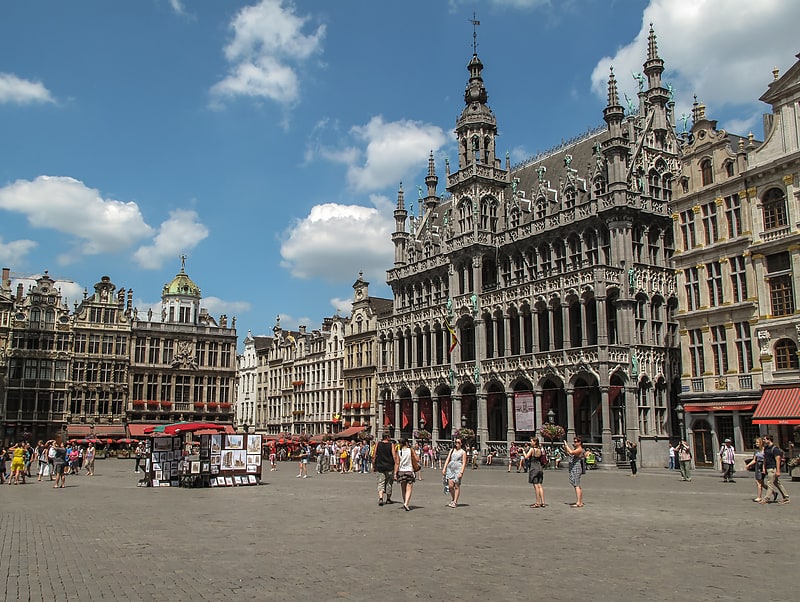
Also known as: Grand-Place de Bruxelles
Plaza in the City of Brussels, Belgium. The Grand Place or Grote Markt is the central square of Brussels, Belgium. It is surrounded by opulent Baroque guildhalls of the former Guilds of Brussels and two larger edifices; the city's Flamboyant Town Hall, and the neo-Gothic King's House or Bread House building containing the Brussels City Museum. The square measures 68 by 110 metres and is entirely paved.
The Grand Place's construction began in the 11th century and was largely complete by the 17th. In 1695, during the Nine Years' War, most of the square was destroyed during the bombardment of Brussels by French troops. Only the facade and the tower of the Town Hall, which served as a target for the artillery, and some stone walls resisted the incendiary balls. The houses that surrounded the Grand Place were rebuilt during subsequent years, giving the square its current appearance, though they were frequently modified in the following centuries. From the mid-19th century, the square's heritage value was rediscovered, and it was thoroughly renovated.
Nowadays, the Grand Place is the most important tourist destination and most memorable landmark in Brussels. It is also considered one of the world's most beautiful squares, and has been a UNESCO World Heritage Site since 1998. The square frequently hosts festive and cultural events, among them, in August of every even year, the installation of an immense flower carpet in its centre. It is also a centre of annual celebrations during the Christmas and New Year period, and a Christmas tree has been erected annually on the square since the mid-20th century.
This site is served by the premetro (underground tram) station Bourse/Beurs (on lines 3 and 4), as well as the bus stop Grand Place/Grote Markt (on line 95).[1]
Address: Grote Markt / Grand Place, 1000 Brussel (Bruxelles-Ville)
Mini-Europe

Amusement park in the City of Brussels, Belgium. Mini-Europe is a miniature park located in Bruparck, at the foot of the Atomium, in Brussels, Belgium. Mini-Europe has reproductions of monuments in the European Union and other countries within the continent of Europe on display, at a scale of 1:25. Roughly 80 cities and 350 buildings are represented. Mini-Europe receives 350,000 visitors per year and has a turnover of €4 million.
The park contains live action models such as trains, mills, an erupting Mount Vesuvius, and cable cars. A guide gives the details on all the monuments. At the end of the visit, the Spirit of Europe exhibition gives an interactive overview of the European Union in the form of multimedia games.
The park is built on an area of 24,000 m2 (300,000 sq ft). The initial investment was of €10 million in 1989, on its inauguration by then-Prince Philip of Belgium.[2]
Address: Voetballaan 1 Avenue du Football, 1020 Laken (Bruxelles-Ville)
Atomium
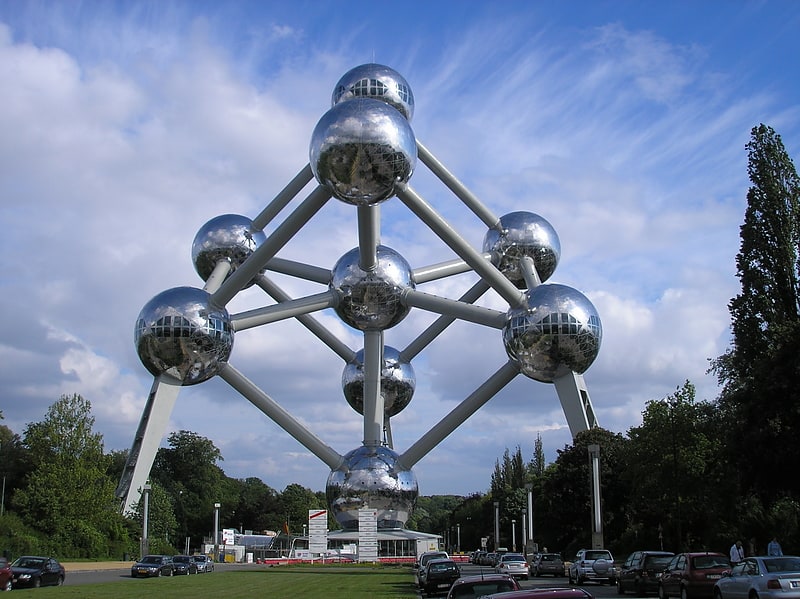
Museum in the City of Brussels, Belgium. The Atomium is a landmark building in Brussels, Belgium, originally constructed for the 1958 Brussels World's Fair. It is located on the Heysel/Heizel Plateau in Laeken, where the exhibition took place. Nowadays, it is the city's most popular tourist attraction, and serves as a museum, an art centre and a cultural place.
Designed by the engineer André Waterkeyn and the architects André and Jean Polak, it stands 102 metres (335 ft) tall. Its nine 18-metre-diameter (59 ft) stainless steel clad spheres are connected in the shape of a unit cell that could represent an iron crystal magnified 165 billion times. Tubes connecting the spheres enclose stairs, escalators and an elevator (in the central, vertical tube) to allow access to the six visitable spheres, which contain exhibit halls and other public spaces. The top sphere includes a restaurant with a panoramic view of Brussels. The building was completely renovated between 2004 and 2006 by the companies Jacques Delens and BESIX.
The building is located on the Square de l'Atomium/Atomiumsquare, at the intersection of the Boulevard du Centenaire/Eeuwfeestlaan with the Avenue de l'Atomium/Atomiumlaan and the Avenue de Bouchout/Boechoutlaan. It is served by Heysel/Heizel metro station on line 6 of the Brussels Metro.[3]
Address: Square de l'Atomium, 1020 Bruxelles (Bruxelles-Ville)
Cinquantenaire
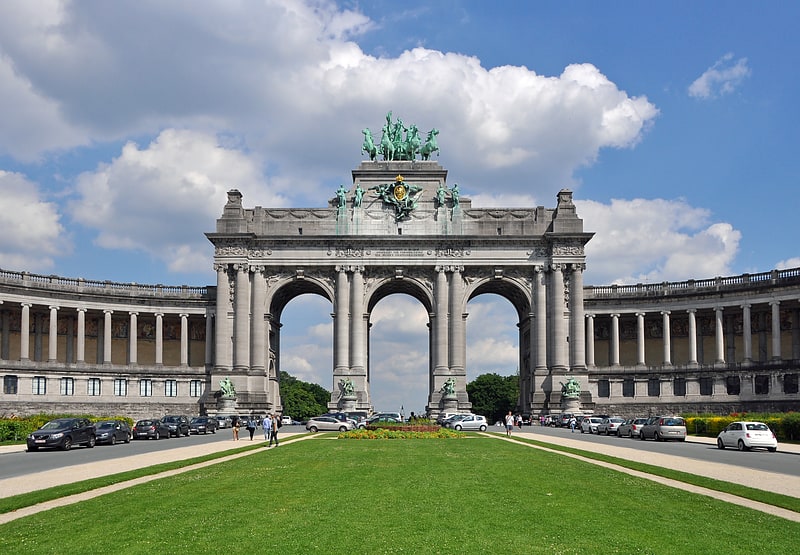
Park in the City of Brussels, Belgium. The Parc du Cinquantenaire or Jubelpark is a large public, urban park of 30 ha in the easternmost part of the European Quarter in Brussels, Belgium.
Most buildings of the U-shaped complex which dominate the park were commissioned by the Belgian Government under the patronage of King Leopold II for the 1880 National Exhibition commemorating the 50th anniversary of the Belgian Revolution. During successive exhibitions in the same area, more structures were added. The centrepiece memorial arch, known as the Cinquantenaire Arch (French: Arc du Cinquantenaire, Dutch: Triomfboog van het Jubelpark), was erected in 1905, replacing a previous temporary version of the arcade by Gédéon Bordiau. The structures were built in iron, glass and stone, symbolising Belgium's economic and industrial performance. The surrounding 30 ha (74 acres) park esplanade was full of picturesque gardens, ponds and waterfalls. It housed several trade fairs, exhibitions and festivals at the beginning of the century. In 1930, the government decided to reserve the Cinquantenaire for use as a leisure park.
The Royal Military Museum has been the sole tenant of the northern half of the complex since 1880. The southern half is occupied by the Art & History Museum and Autoworld vintage car museum. The Temple of Human Passions by Victor Horta, a remainder from 1886, and the Great Mosque of Brussels from 1978, are located in the north-western corner of the park (see map below).
Line 1 of the Brussels Metro and the Belliard Tunnel from the Rue de la Loi/Wetstraat pass underneath the park, the latter partly in an open section in front of the arch. The nearest metro stations are Schuman to the west of the park, and Merode immediately to the east.[4]
Address: Parc du Cinquantenaire / Jubelpark, 1000 Brussel (Bruxelles-Ville)
Manneken Pis
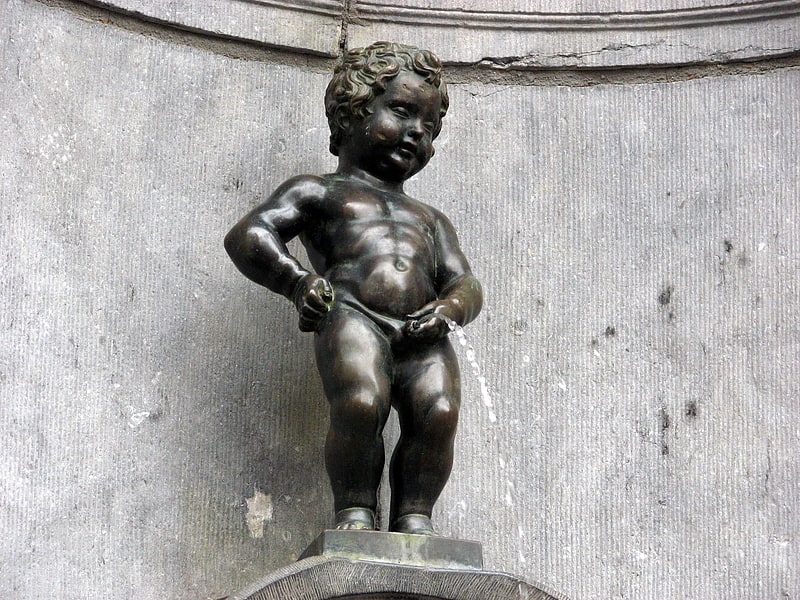
Also known as: Manneken-Pis
Sculpture by Jerôme Duquesnoy. Manneken Pis is a landmark 61 cm bronze fountain sculpture in central Brussels, Belgium, depicting a puer mingens or naked little boy urinating into the fountain's basin. It was designed by the Brabantine sculptor Jérôme Duquesnoy the Elder and put in place in 1618 or 1619. The current statue is a replica which dates from 1965. The original is kept in the Brussels City Museum. Manneken Pis is one of the best-known symbols of Brussels and Belgium. It is also an example of belgitude, as well as of folk humour popular in Brussels.
Manneken Pis is an approximate five minutes' walk from the Grand Place (Brussels' main square), at the junction of the Rue du Chêne/Eikstraat and the pedestrian Rue de l'Étuve/Stoofstraat. This site is served by the premetro (underground tram) station Bourse/Beurs (on lines 3 and 4), as well as the bus stops Grand Place/Grote Markt (on line 95) and Cesar de Paepe (on lines 33 and 48).[5]
Address: Rue des Grands Carmes 31-33, 1000 Bruxelles (Bruxelles-Ville)
Museum of Natural Sciences

Also known as: Muséum des sciences naturelles
Museum in the City of Brussels, Belgium. The Museum of Natural Sciences of Belgium is a museum dedicated to natural history, located in Brussels, Belgium. The museum is a part of the Royal Belgian Institute of Natural Sciences. Its most important pieces are 30 fossilised Iguanodon skeletons, which were discovered in 1878 in Bernissart, Belgium. The dinosaur hall of the museum is the world's largest museum hall completely dedicated to dinosaurs. Another famous piece is the Ishango bone, which was discovered in 1960 by Jean de Heinzelin de Braucourt in the Belgian Congo. The museum also houses a research department and a public exhibit department.[6]
Address: Rue Vautier 29, 1000 Bruxelles (Bruxelles-Ville)
Royal Greenhouses of Laeken

Also known as: Serres royales de Laeken
Greenhouse in the City of Brussels, Belgium. The Royal Greenhouses of Laeken are a vast complex of monumental heated greenhouses in the park of the Royal Palace of Laeken, Belgium. The historic complex contains tropical, subtropical and cold greenhouses.
The greenhouses were designed and built by Alphonse Balat on behalf of King Leopold II. They are now part of the Royal Domain and the royal private gardens belonging to the Belgian Royal Family, and are accessible to the public only a few days a year. This site is served by Stuyvenbergh metro station on line 6 of the Brussels Metro.[7]
Address: Avenue du Parc Royal 61, 1020 Bruxelles (Bruxelles-Ville)
Cathedral of St. Michael and St. Gudula
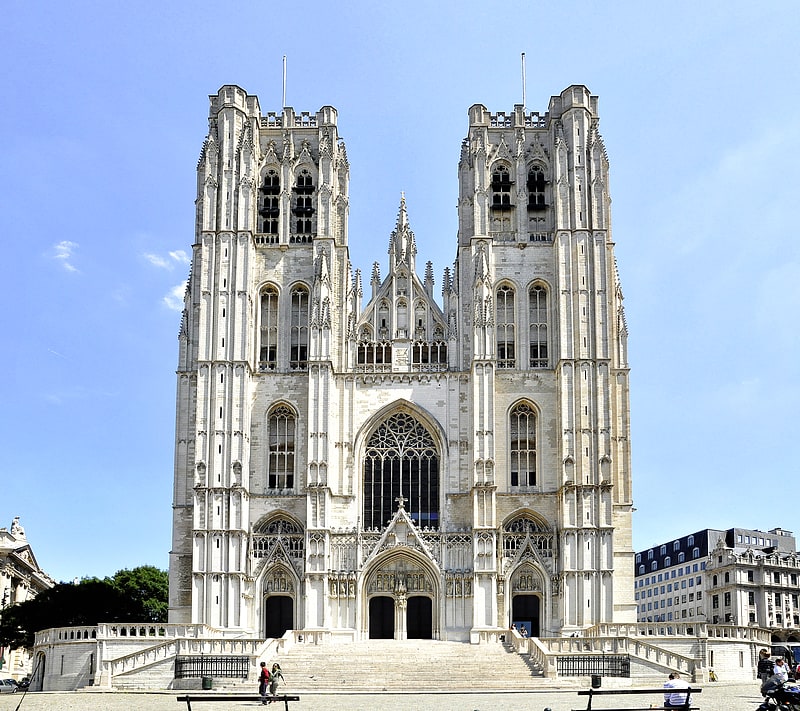
Also known as: Cathédrale Saints-Michel-et-Gudule de Bruxelles
Cathedral in the City of Brussels, Belgium. The Cathedral of St. Michael and St. Gudula is a medieval Roman Catholic cathedral in central Brussels, Belgium. It is dedicated to Saint Michael and Saint Gudula, the patron saints of the City of Brussels, and is considered to be one of the finest examples of Brabantine Gothic architecture.
The church's construction began in the 11th century and was largely complete by the 16th, though its interior was frequently modified in the following centuries. The church was given cathedral status in 1962 and has since been the co-cathedral of the Metropolitan Archdiocese of Mechelen–Brussels, together with St. Rumbold's Cathedral in Mechelen. Since the mid-20th century, following the construction of the North–South connection, it is situated on the Parvis Sainte-Gudule/Sinter-Goedelevoorplein, east of the Boulevard de l'Impératrice/Keizerinlaan. This area is served by Brussels Central Station.[8]
Address: Parvis Sainte-Gudule / Sint-Goedelevoorplein, 1000 Brussel (Bruxelles-Ville)
Musical Instrument Museum
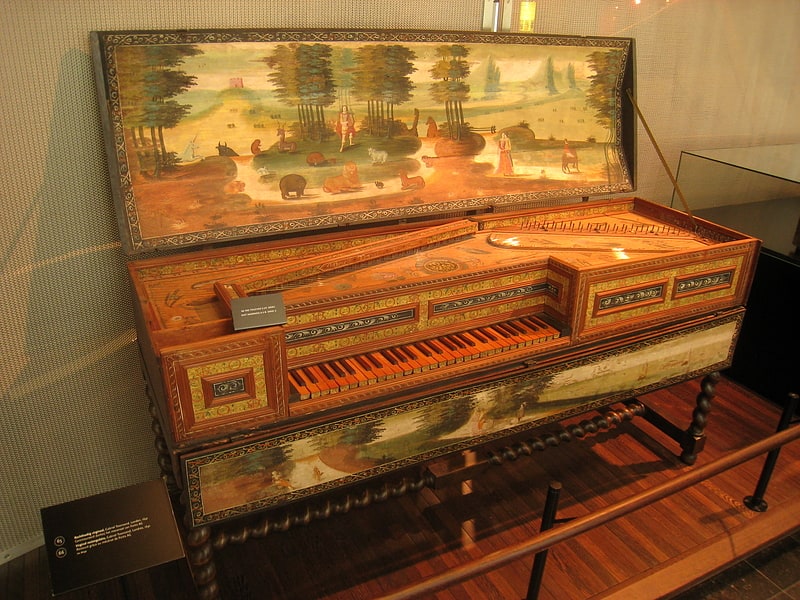
Also known as: Musée des instruments de musique de Bruxelles
Museum in the City of Brussels, Belgium. The Musical Instruments Museum is a music museum in central Brussels, Belgium. It is part of the Royal Museums of Art and History and internationally renowned for its collection of over 8,000 instruments.[9]
Address: Rue Montagne de la Cour 2, 1000 Bruxelles (Bruxelles-Ville)
City Hall
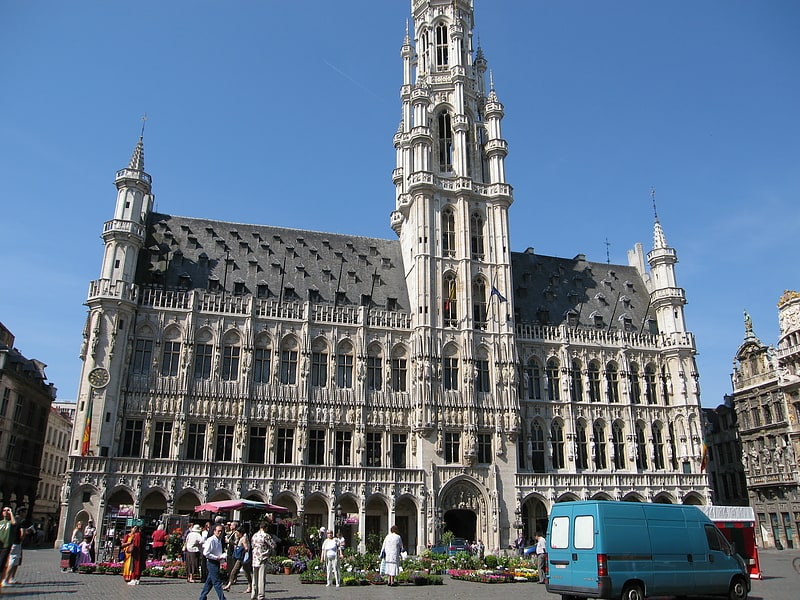
Also known as: Hôtel de ville de Bruxelles
Building in the City of Brussels, Belgium. The Town Hall of the City of Brussels is a landmark building in Brussels, Belgium. It is located on the famous Grand Place, opposite the King's House or Bread House building housing the Brussels City Museum.
Erected between 1401 and 1455, the Town Hall is the only remaining medieval building of the Grand Place and is considered a masterpiece of civil Gothic architecture and more particularly of Brabantine Gothic. Its three classicist rear wings date from the 18th century. It is also listed as a UNESCO World Heritage Site, as part of the square.
This site is served by the premetro (underground tram) station Bourse/Beurs (on lines 3 and 4), as well as the bus stop Grand Place/Grote Markt (on line 95).[10]
Address: Grand-Place, Grote Markt 1, 1000 Brussels (Bruxelles-Ville)
Palais de Justice
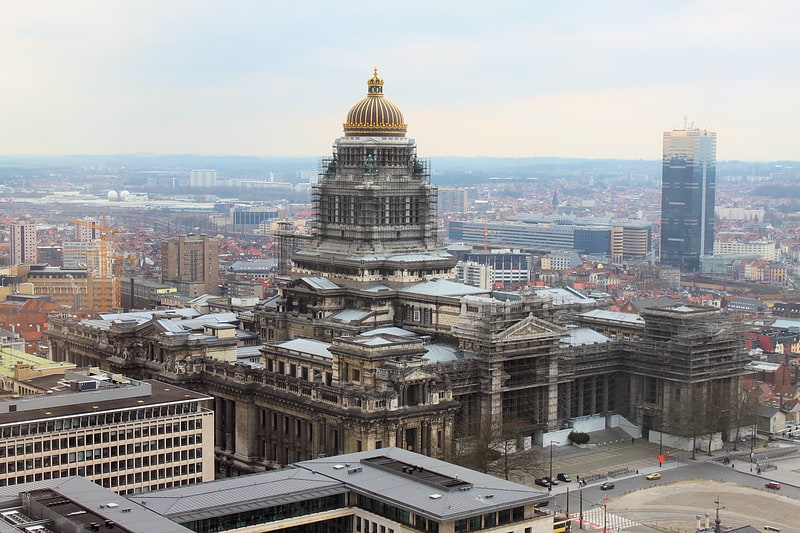
Also known as: Palais de justice de Bruxelles
Courts. The Palace of Justice of Brussels or Law Courts of Brussels is the most important court building in Belgium, seat of the judicial arrondissement of Brussels, as well as of several courts and tribunals, including the Court of Cassation, the Court of Assizes, the Court of Appeal of Brussels, the Tribunal of First Instance of Brussels, and the Bar Association of Brussels. It is located on the Place Poelaert/Poelaertplein in the Marolles/Marollen district.
Designed by the architect Joseph Poelaert in an eclectic style of Greco-Roman inspiration to replace an older courthouse, the Palace of Justice was built between 1866 and 1883. With a ground surface of 26,006 m2 (279,930 sq ft), the edifice is reputed to be the largest constructed in the 19th century and remains one of the largest of its kind. The total cost of the construction, land and furnishings was somewhere in the region of 50 million Belgian francs. The building suffered heavy damage during World War II, during which the cupola was destroyed, and later rebuilt higher than the original. The building has been under renovation since 1984.
A notable landmark of Brussels, this site is served by Louise/Louiza metro station (on lines 2 and 6 of the Brussels Metro), as well as the tram stop of the same name (on lines 8 and 92). From the lower part of town, it is also possible to take public elevators, called the Poelaert Elevators, to access it.[11]
Autoworld Museum
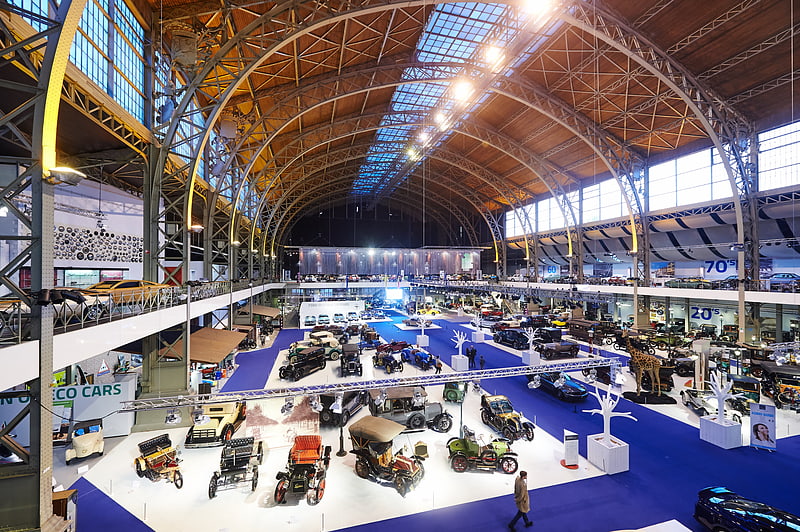
Also known as: Autoworld
Museum in the City of Brussels, Belgium. Autoworld is a museum of vintage cars in Brussels, Belgium. It is located in the southern hall of the Cinquantenaire Park, and displays a large and varied collection of over 250 European and American automobiles from the late 19th century to the 1990s. It is notable for its collections of early and Belgian-produced vehicles, including Minervas and several limousines belonging to the Belgian royal family.[12]
Address: Jubelpark 11 Parc du Cinquantenaire, 1000 Brussel (Bruxelles-Ville)
Belgian Comic Strip Center
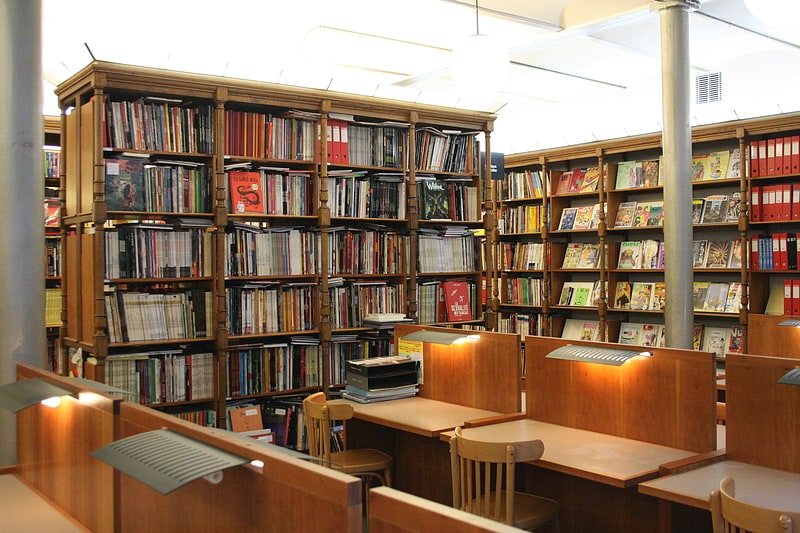
Also known as: Centre belge de la bande dessinée
Museum in the City of Brussels, Belgium. The Belgian Comic Strip Center is a museum in Brussels dedicated to Belgian comics. It is located at 20, rue des Sables/Zandstraat, and is served by the Brussels-Congress railway station.[13]
Address: Rue des Sables 20, 1000 Bruxelles (Bruxelles-Ville)
Tomb of the Unknown Soldier
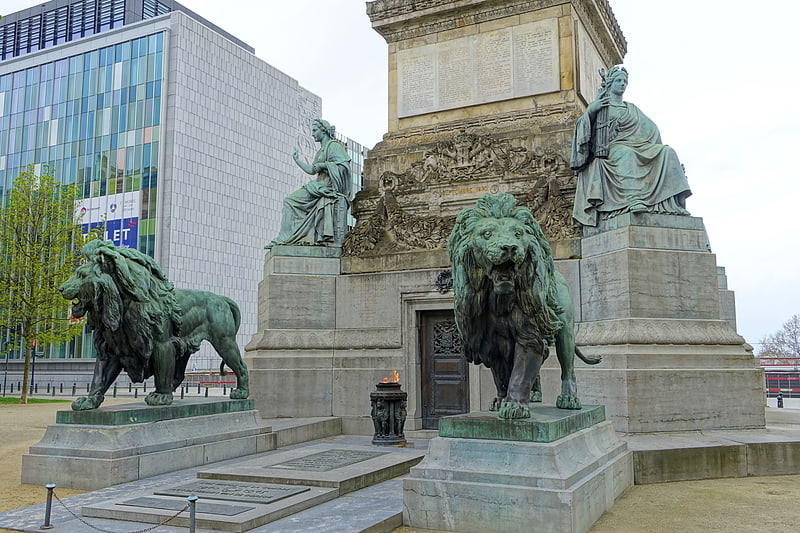
Also known as: Tombe du Soldat inconnu
A Tomb of the Unknown Soldier is a monument dedicated to the services of an unknown soldier and to the common memories of all soldiers killed in war. Such tombs can be found in many nations and are usually high-profile national monuments. Throughout history, many soldiers have died in war with their remains being unidentified. Following World War I, a movement arose to commemorate these soldiers with a single tomb, containing the body of one such unidentified soldier.[14]
Bortier Gallery
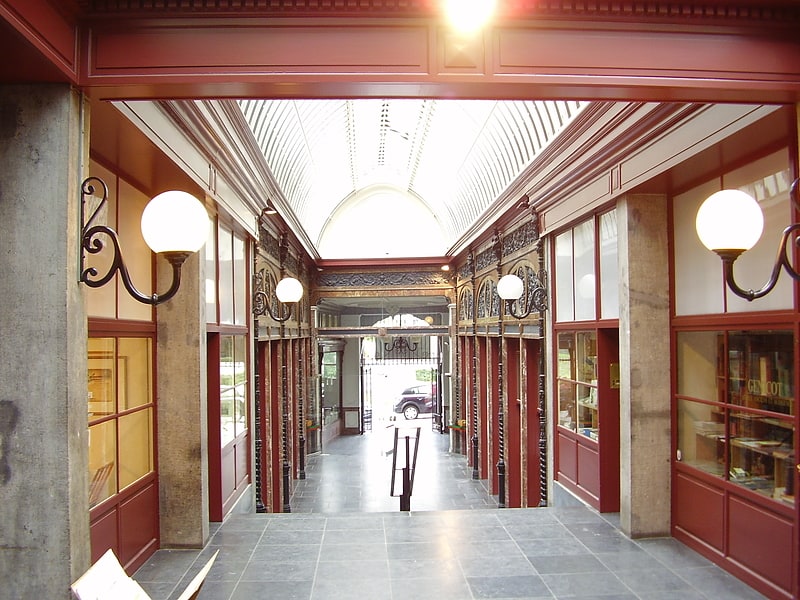
Also known as: Galerie Bortier
Shopping arcade. The Bortier Gallery is a shopping arcade designed by Jean-Pierre Cluysenaer. It was constructed in 1847 and opened in the following year. It is situated in the centre of the City of Brussels between the Mont des Arts/Kunstberg and the Grand Place/Grote Markt, not far from the more monumental Royal Saint-Hubert Galleries. Proprietor is the City of Brussels and it is managed by its Land Administration services. The gallery is built in a Neo-Renaissance style and is a fine example of the joint use of cast iron and glass.
Originally, the mall was a part of the Marché de la Madeleine/Magdalenamarkt complex, a covered market also designed by Cluysenaer. The facade on the rue de la Madeleine in a Flemish baroque style antedates the construction of the mall behind it. This front dates from 1763 and was recuperated from the Hôtel des Grandes Messageries a town house situated at that site.
The gallery owes its name to an investor named Pierre Bortier, who had acquired land between the Rue Duquesnoy and the Rue Saint-Jean/Sint-Jansstraat, made available by the demolition of the former Hôpital Saint-Jean/Sint-Janshospitaal. He proposed to the city of Brussels to build the Marché de la Madeleine/Magdalenamarkt. This covered market had its main entrance at the Rue Duquesnoy. Starting from the Hôtel des Grandes Messageries, located at the Rue de la Madeleine the gallery passed along the rounded southern end of the market hall on the level of its first floor, and ended in the Rue Saint-Jean/Sint-Jansstraat. The Madeleine market was demolished in 1957 and replaced by a modern event hall, leaving only the original facade in place. The Bortier Gallery was thus detached from the market building. Very degraded, it was renovated in 1974 and again around 2010.
The place is now well known to lovers of literature and old books, being almost entirely occupied, with the exception of an art gallery, with stalls and second-hand booksellers. Jean-Baptiste Moens, known as the father of philately ran a shop in the Bortier Gallery from 1853 onwards.[15]
Address: Magdalenastraat 57 Rue de la Madeleine, 1000 Brussel (Bruxelles-Ville)
Royal Museum of the Armed Forces and Military History
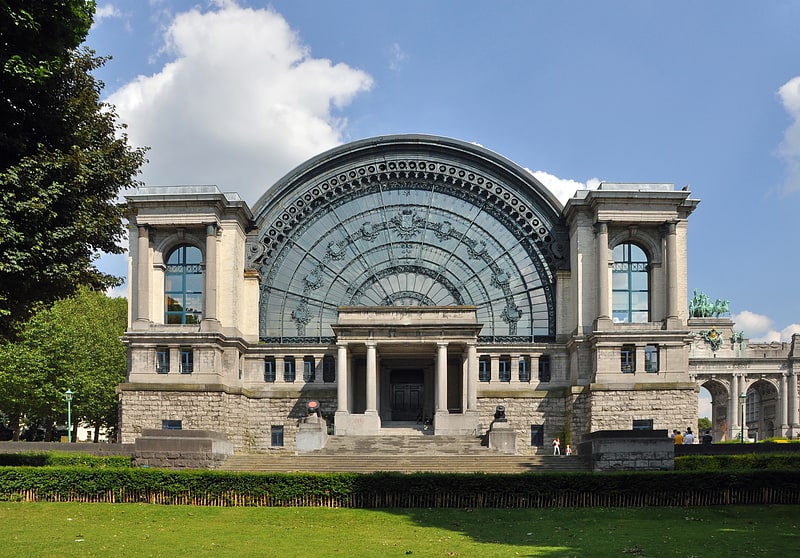
Also known as: Musée royal de l'armée et de l'histoire militaire
Museum in the City of Brussels, Belgium. The Royal Museum of the Armed Forces and Military History is a military museum that occupies the two northernmost halls of the historic complex in Cinquantenaire Park in Brussels, Belgium. The park is set on the continuation of Rue de la Loi/Wetstraat, which starts at the end of Brussels' Park before the Royal Palace.[16]
Address: Parc du Cinquantenaire, 1000 Brussel (Bruxelles-Ville)
Palace of Laeken
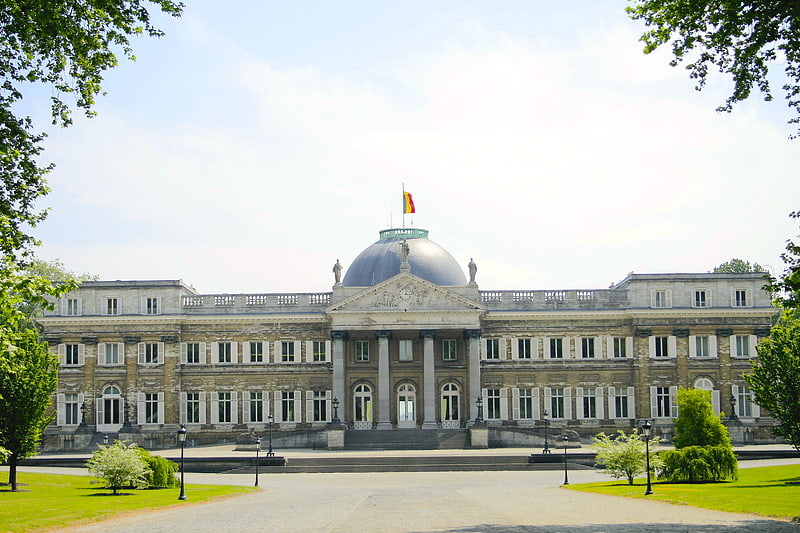
Also known as: Château de Laeken
Official residence in the City of Brussels, Belgium. The Palace of Laeken or Castle of Laeken is the official residence of the King of the Belgians and the Belgian Royal Family. It lies in the Brussels-Capital Region, 5 km north of the city centre, in Laeken, and sits in a large private park called the Royal Domain of Laeken.
The palace was built between 1782 and 1784 for the Governors of the Habsburg Netherlands, and was originally named the Palace of Schonenberg. It was partly destroyed by fire in 1890, after which it was rebuilt and extended. Significant modifications were undertaken at the beginning of the 20th century during the reign of King Leopold II. Nowadays, it is often referred to as the Royal Palace of Laeken or Royal Castle of Laeken.
The Palace of Laeken should not be confused with the Royal Palace of Brussels, in central Brussels, which is the official palace (not residence) of the King of the Belgians and from which state affairs are handled. It is served by Stuyvenbergh metro station on line 6 of the Brussels Metro.[17]
Museums of the Far East
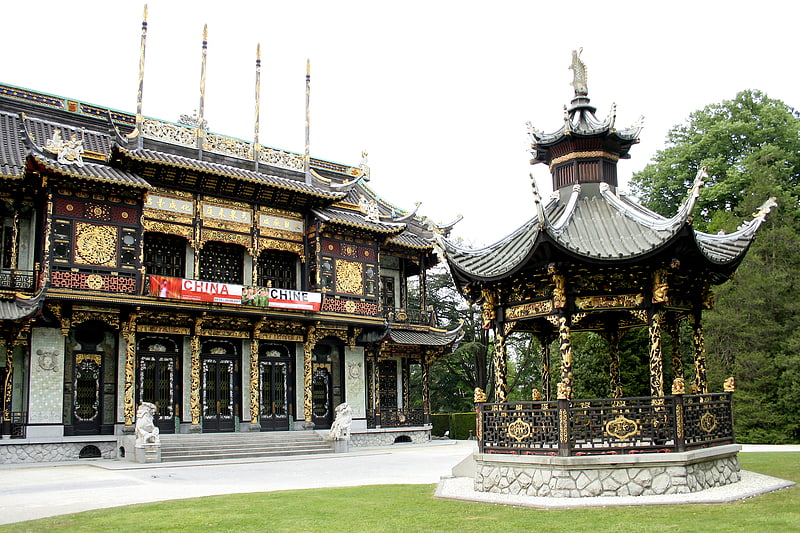
Also known as: Musées d'Extrême-Orient
Museum in the City of Brussels, Belgium. The Museums of the Far East is a complex of three museums in Laeken, City of Brussels, dedicated to Oriental art and culture, specifically that of China and Japan. It is part of the Royal Museums of Art and History.
The three museums have been closed since 2013 because of structural weaknesses. Some items from their collections are on public display at the Art & History Museum.[18]
Address: Avenue Van Praetlaan 44, 1020 Laken (Bruxelles-Ville)
Saint-Jacques-sur-Coudenberg

Church in the City of Brussels, Belgium. The Church of St. James on Coudenberg is a neoclassical Roman Catholic church located on the historic Place Royale/Koningsplein in central Brussels, Belgium. It is served by Brussels Central Station, as well as by the metro stations Parc/Park and Trône/Troon.[19]
Address: Impasse du Borgendael 1, 1000 Bruxelles (Bruxelles-Ville)
Sablon
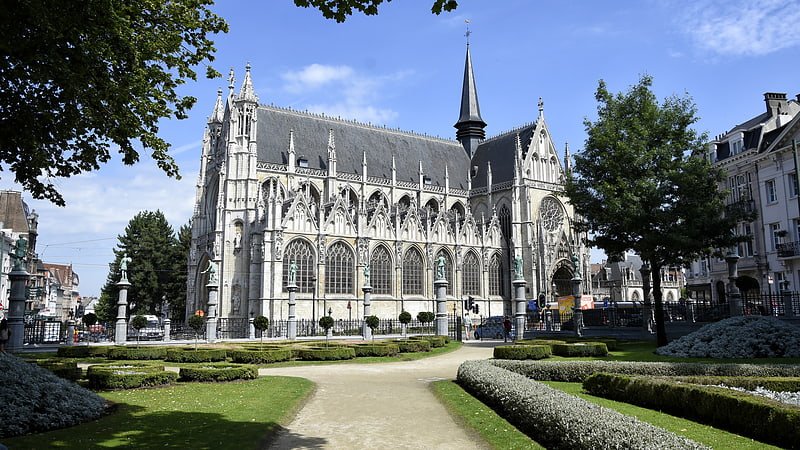
Neighbourhood in the City of Brussels, Belgium. The Sablon or Zavel is a neighbourhood and hill in the historic upper town of Brussels, Belgium. At its heart are twin squares: the larger Grand Sablon or Grote Zavel square in the north-west and the smaller Petit Sablon or Kleine Zavel square and garden in the south-east, divided by the Church of Our Blessed Lady of the Sablon.[20]
Royal Museums of Art and History
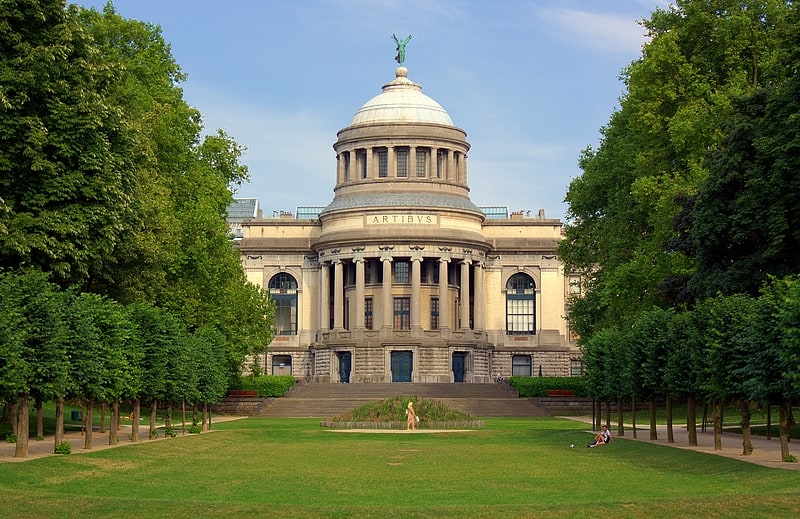
Also known as: Musées royaux d'art et d'histoire de Bruxelles
The Royal Museums of Art and History or RMAH is a group of museums in Brussels, Belgium. It is part of the Belgian federal institute of the Belgian Federal Science Policy Office.
The group comprises:
- Art & History Museum (formerly the Cinquantenaire Museum)
- Horta-Lambeaux Pavilion
- Halle Gate
- Museums of the Far East
- Musical Instrument Museum
Address: Jubelpark 10 Parc du Cinquantenaire, 1000 Brussel (Bruxelles-Ville)
Royal Palace of Brussels

Also known as: Palais royal de Bruxelles
Palace in the City of Brussels, Belgium. The Royal Palace of Brussels is the official palace of the King and Queen of the Belgians in the centre of the nation's capital, Brussels. However, it is not used as a royal residence, as the king and his family live in the Royal Palace of Laeken in northern Brussels. The website of the Belgian Monarchy describes the function of the palace as follows:
The Palace is where His Majesty the King exercises his prerogatives as Head of State, grants audiences and deals with affairs of state. Apart from the offices of the King and the Queen, the Royal Palace houses the services of the Grand Marshal of the Court, the King's Head of Cabinet, the Head of the King's Military Household and the Intendant of the King's Civil List. The Palace also includes the State Rooms where large receptions are held, as well as the apartments provided for foreign Heads of State during official visits.
The first nucleus of the present-day building dates from the end of the 18th century. However, the grounds on which the palace stands were once part of the Coudenberg Palace, a very old palatial complex that dated back to the Middle Ages. The facade existing today was only built after 1900 on the initiative of King Leopold II.
The Royal Palace is situated in front of Brussels Park, from which it is separated by a long square called the Place des Palais/Paleizenplein. The middle axis of the park marks both the middle peristyle of the Royal Palace and of the Belgian Federal Parliament building (Palace of the Nation) on the other side of the park. The two facing buildings are said to symbolise Belgium's system of government: a constitutional monarchy. This area is served by Brussels Central Station, as well as by the metro stations Parc/Park (on lines 1 and 5) and Trône/Troon (on lines 2 and 6).[22]
Address: Paleizenplein 1 Place des Palais, 1000 Brussel (Bruxelles-Ville)
Museum of Cocoa and Chocolate
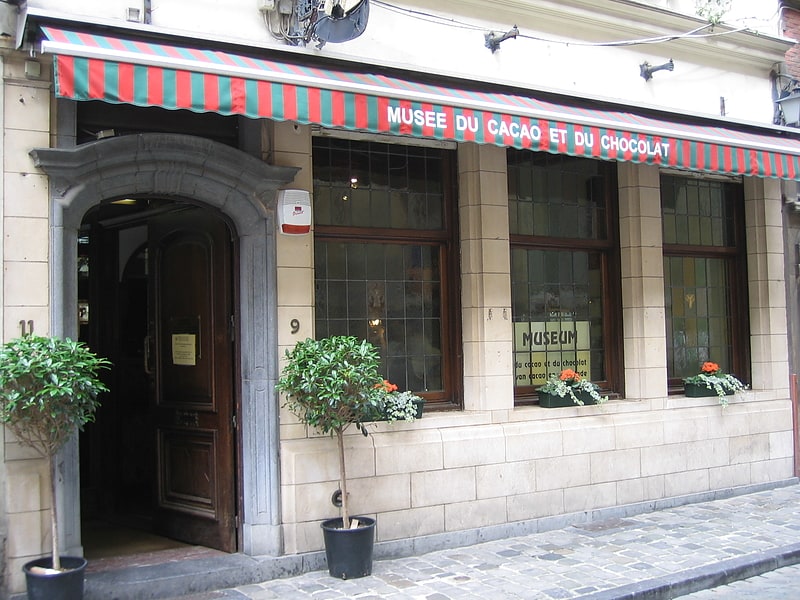
Also known as: Choco-Story Brussels
Museum in the City of Brussels, Belgium. Choco-Story Brussels, formerly known as the Museum of Cocoa and Chocolate is a privately held museum in Brussels, Belgium, established in 1998 at the initiative of Gabrielle Draps, the wife of a famous Belgian chocolate artisan Joseph "Jo" Draps, founder of the Godiva Chocolatier.[23]
Address: Rue de la Tête d'or 9, 1000 Bruxelles (Bruxelles-Ville)
Church of Our Lady of Laeken
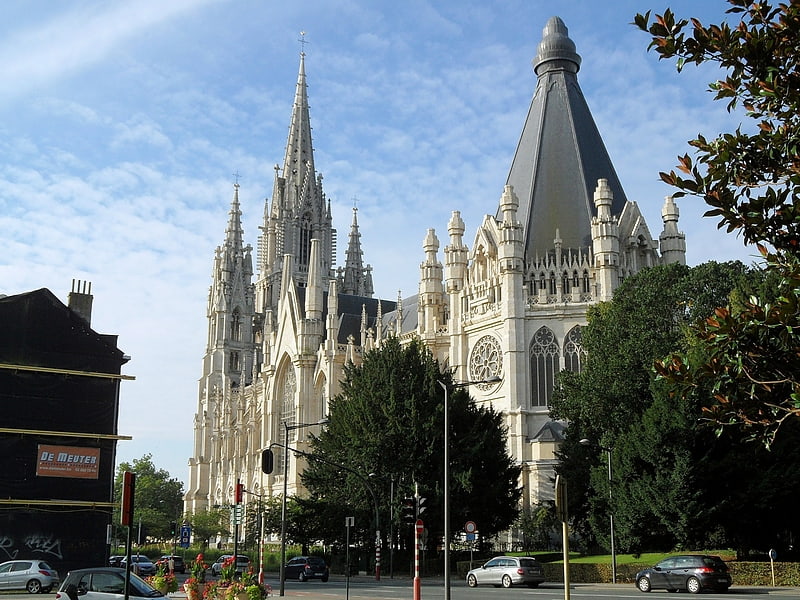
Also known as: Église Notre-Dame de Laeken
Catholic church in the City of Brussels, Belgium. The Church of Our Lady of Laeken is a neo-Gothic Roman Catholic church in Laeken, Brussels, Belgium. It was originally built in memory of Queen Louise-Marie, wife of King Leopold I to the design of architect Joseph Poelaert.
Louise-Marie died in Ostend in 1850 and wished to be buried in Laeken. The nearby Royal Castle of Laeken was, and still is, the royal residence. Leopold I wished the church to be constructed in her memory and as a mausoleum for her. The architect Joseph Poelaert was chosen to design the new church. (He later became best known for the Law Courts of Brussels.)
Pope Pius XI crowned the venerated Marian image within on 17 May 1936 in the presence of the King Leopold III of Belgium and his royal heirs. This image of the Blessed Virgin Mary became the source for the image of Our Lady of China, crowned by Pope Francis on 19 February 2021.[24]
Address: Parvis Notre Dame, 1020 Bruxelles (Bruxelles-Ville)
Cinquantenaire Museum

Also known as: Musée Art et Histoire
Museum in the City of Brussels. The Art & History Museum is a public museum of antiquities and ethnographic and decorative arts located at the Cinquantenaire Park in Brussels, Belgium. The museum is one of the constituent parts of the Royal Museums of Art and History and is one of the largest art museums in Europe. It was formerly called the Cinquantenaire Museum until 2018.[25]
Address: 10 Parc du Cinquantenaire - Jubelpark, 1000, Bruxelles - Brussel, Brussels (Bruxelles-Ville)
Halle Gate
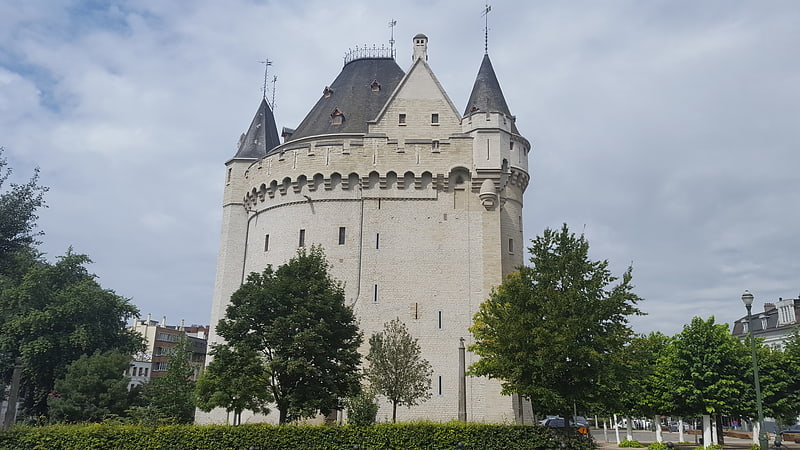
Also known as: Porte de Hal
Museum in the City of Brussels, Belgium. The Halle Gate is a former medieval city gate and the last vestige of the second walls of Brussels, Belgium. Built between 1381 and 1383, and heavily restored in the 19th century by the architect Henri Beyaert, it is now a museum, part of the Royal Museums of Art and History.
The Halle Gate is located on Boulevard du Midi/Zuidlaan between the City of Brussels and Saint-Gilles municipalities. This site is served by Porte de Hal/Hallepoort metro station on lines 2 and 6 of the Brussels Metro.[26]
Address: Zuidlaan 150, 1060 Sint-Gillis (Bruxelles-Ville)
Magritte Museum
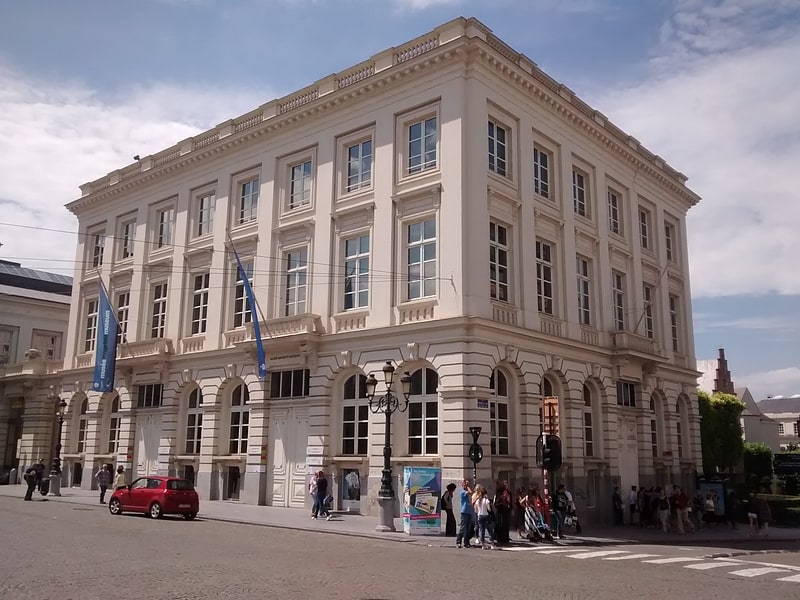
Also known as: Musée Magritte
Museum in the City of Brussels, Belgium. The Magritte Museum is a museum in central Brussels, Belgium, dedicated to the work of the Belgian surrealist artist, René Magritte. It is one of the constituent museums of the Royal Museums of Fine Arts of Belgium. It is served by Brussels Central Station, as well as by the metro stations Parc/Park and Trône/Troon.[27]
Address: Rue de la Régence 3, 1000 Bruxelles (Bruxelles-Ville)
King Baudouin Stadium
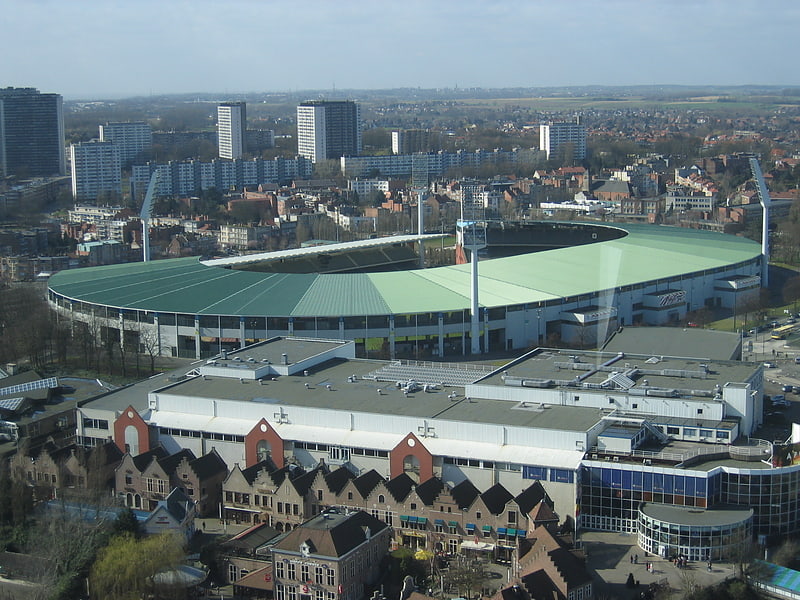
Also known as: Stade Roi Baudouin
Sports ground in the City of Brussels, Belgium. The King Baudouin Stadium is a sports ground in north-west Brussels, Belgium. Located in the Heysel section of the Brussels municipality, it was built to embellish the Heysel plateau in view of the 1935 Brussels International Exposition. It was inaugurated on 23 August 1930, with Crown Prince Leopold attending the opening ceremony. The stadium hosted 70,000 at the time. A wooden track for cycling races was later added around the pitch. Its name honours Baudouin of Belgium, Leopold's son and successor as King of the Belgians, from 1951 to his death in 1993.[28]
Address: Avenue de Marathonlaan 135, 1020 Laken (Bruxelles-Ville)
Jeanneke Pis
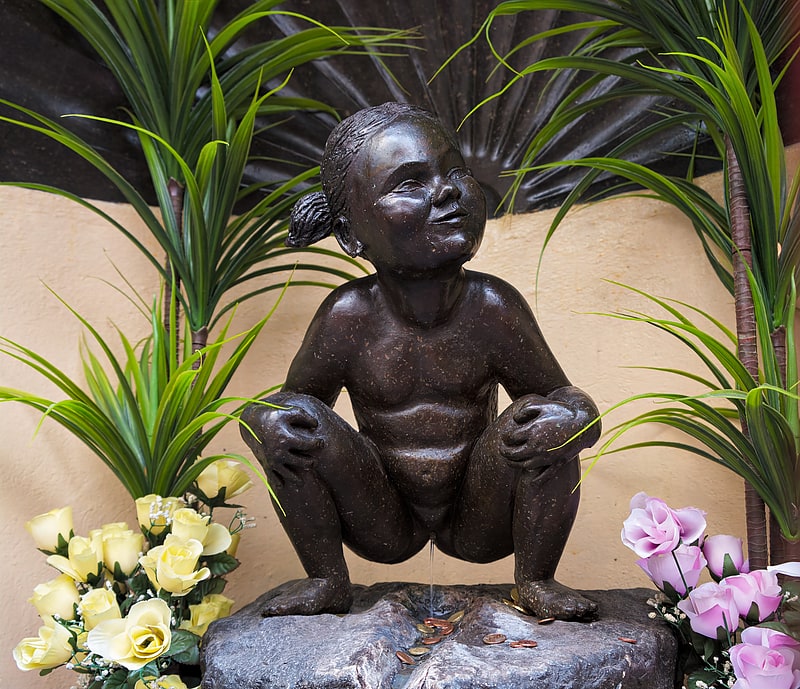
Also known as: Jeanneke-Pis
Fountain in the City of Brussels, Belgium. Jeanneke Pis is a modern fountain sculpture in central Brussels, Belgium. It was commissioned by Denis-Adrien Debouvrie in 1985 and erected in 1987 as a counterpoint to the city's famous Manneken Pis. The 50-centimetre bronze statue depicts a little girl with short pigtails, squatting and urinating on a blue-grey limestone base.
Jeanneke Pis is located north of the Grand Place (Brussels' main square), on the eastern side of the Impasse de la Fidélité/Getrouwheidsgang, a narrow cul-de-sac some 30 metres (100 ft) long leading northwards off the restaurant-packed Rue des Bouchers/Beenhouwersstraat. The sculpture is now protected from vandalism by iron bars.[29]
Address: Getrouwheidsgang / Impasse de la Fidélité, 1000 Brussel (Bruxelles-Ville)
Bouchout Castle
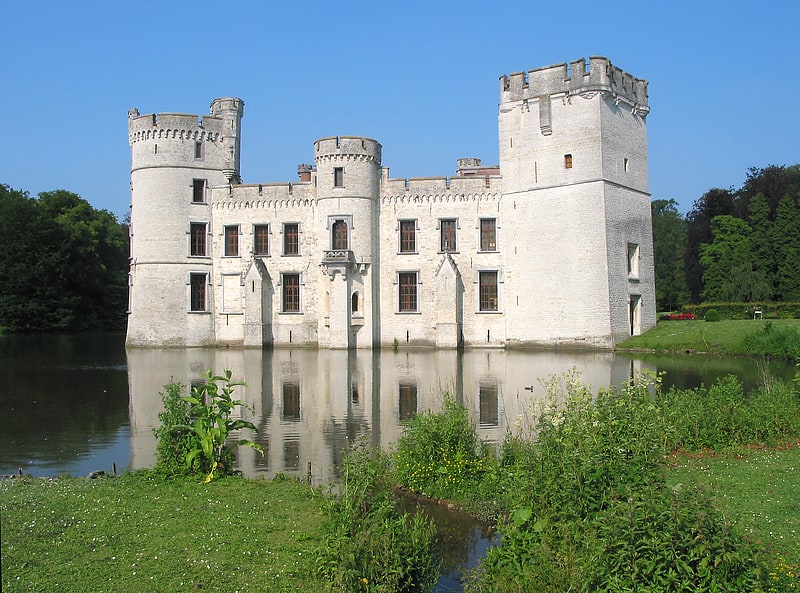
Also known as: Château de Bouchout
Grand castle with a botanical garden. Bouchout Castle is a castle in the Flemish town of Meise, Belgium. In the 12th century, this territory of the young Duchy of Brabant was strategically positioned between the County of Flanders and the Berthout family, lords of Grimbergen. Most likely, the first fortification was built by Wouter van Craaynem at the end of the Grimbergen Wars. Bouchout Castle is situated at an altitude of 32 meters.
At about 1300, the Donjon tower of Bouchout Castle was erected by Daniel van Bouchout, a knight who fought gloriously at the Battle of Worringen. In the 15th and 16th century, Bouchout Castle was owned by the Van der Marck and van Sevenbergen sayd Transylvanus families. The castle fell into disrepair due to lack of maintenance, while the Spanish dominance and the iconoclastic fury further worsened its condition.
The first major renovation was performed by Christoffel d'Assonville at about 1600. The rectangular medieval Bouchout Castle was surrounded by a large pond and could only be reached by a long drawbridge. At the end of the 17th century, Peter-Ferdinand Roose transformed the castle into a Renaissance "Chateau de Bouchout", surrounded with French ornamental gardens. Unfortunately, the castle was partly destroyed during the French Revolution period (1800–1830). Again, the castle was restored in 1832 by count Amadeus de Beauffort, who gave Bouchout Castle its current Neo-Gothic appearance.
From 1879 until 1927, Empress Carlota of Mexico, born Princess Charlotte of Belgium, lived at the Bouchout Domain. Her husband Emperor Maximilian I of Mexico, head of the Second Mexican Empire, was executed by Mexican republicans in 1867. Thereafter Charlotte led a secluded life at Bouchout Castle. Since 1939, the Bouchout Domain has developed into the National Botanic Garden of Belgium. Since the last renovation of 1987–1989, the castle and its rooms are now being used for meetings, lectures and exhibitions.[30]
Royal Theatre Toone
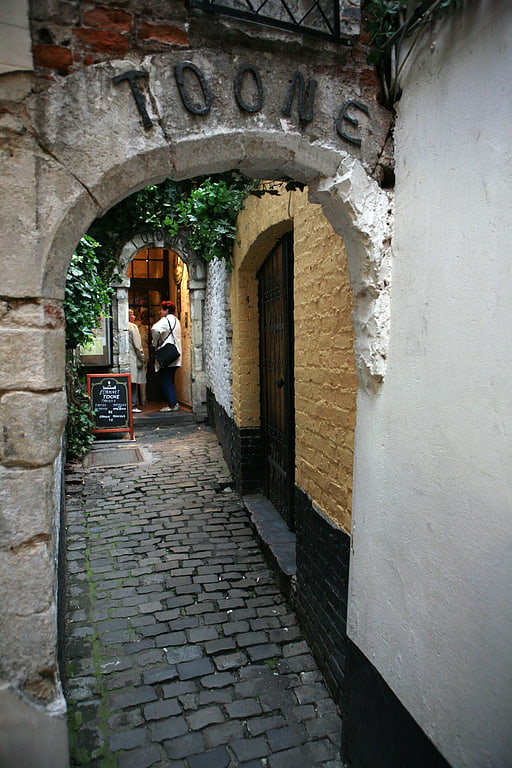
The Royal Theatre Toone, is a folkloric theatre of marionettes in central Brussels, Belgium, active since 1830, and the only traditional Brussels puppet theatre still in operation.
Originally founded by Antoine "Toone" Genty in the Marolles/Marollen district of Brussels, since 1966, the theatre has been located at the end of two narrow alleyways, at 66, rue du Marché aux Herbes/Grasmarkt, near the Grand Place. The theatre's current premises also house a tavern and a small puppetry museum. The current director is Nicolas Géal, also known as Toone VIII.
The theatre still puts on puppet plays in the Brusselian dialect (also sometimes referred to as Marols or Marollien), the traditional Brabantian dialect of Brussels. Performances are also given in other languages interspersed with Brusselian.[31]
Address: Impasse Schuddeveld 6, 1000 Bruxelles (Bruxelles-Ville)
Meise Botanic Garden
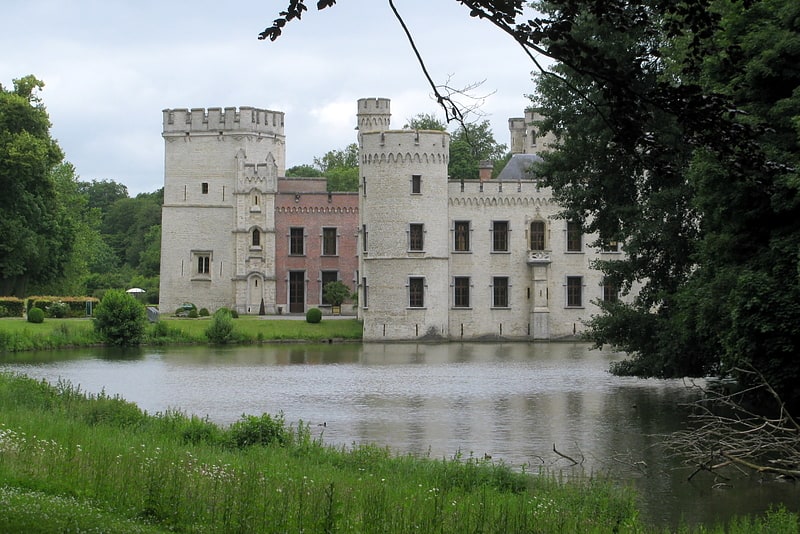
Also known as: Jardin botanique de Meise
227-acre botanic gardens and 1130s castle. The Meise Botanic Garden is located in the grounds of Bouchout Castle in the town of Meise, just north of Brussels, in the province of Flemish Brabant. It is one of the largest botanical gardens in the world with an extensive collection of living plants in addition to a herbarium of about 4 million specimens. The current garden was established in 1958 after it moved from the centre of Brussels; the former site is now the Botanical Garden of Brussels. Researchers at the garden conduct research particularly on Belgian and African plants.
The Botanic Garden contains about 18,000 plant species—about 6% of all known plant species of the world. Half are in greenhouses, the other half, including cultivated and indigenous plants, are outdoors. The Index Herbariorum code assigned to this botanic garden is BR and it is used when citing housed specimens. The gardens are grouped around the castle and lake of the Bouchout domain.
The mission statement of the Meise Botanic Garden specifies the increasing and spreading "the knowledge of plants" and contributions to "the conservation of biodiversity."
The Botanic Garden was property of the Belgian federal government, but after several years of negotiations it was eventually transferred to the Flemish Community (Flanders) effective 1 January 2014. The French Community still has its own employees and representation in the board of directors. The plants, library, etc. remain property of the federal State but given as commodate to the Flemish Community.[32]
Address: Nieuwelaan 38, 1860 Meise
Royal Museums of Fine Arts of Belgium
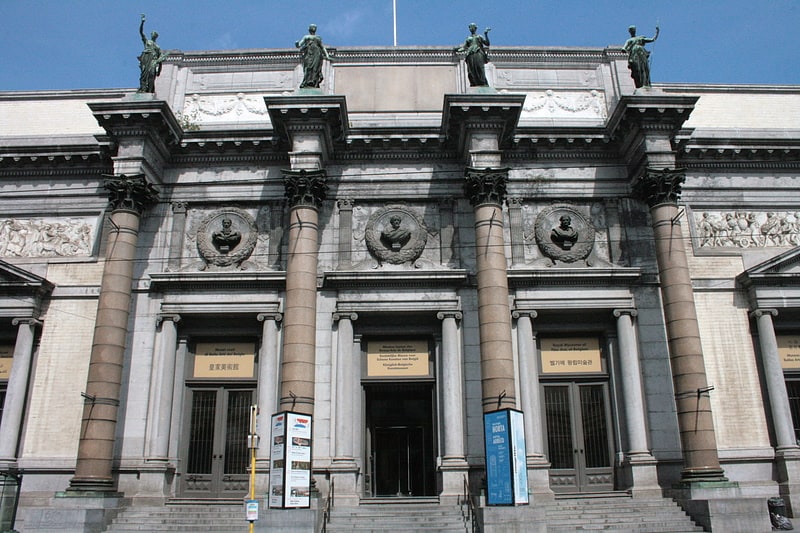
Also known as: Musées royaux des beaux-arts de Belgique
Museum in the City of Brussels, Belgium. The Royal Museums of Fine Arts of Belgium are a group of art museums in Brussels, Belgium. They include six museums: the Oldmasters Museum, the Magritte Museum, the Fin-de-Siècle Museum, the Modern Museum, the Antoine Wiertz Museum and the Constantin Meunier Museum.
The Royal Museums contains over 20,000 drawings, sculptures, and paintings, which date from the early 15th century to the present.[33]
Address: Rue de la Régence 3, 1000 Bruxelles (Bruxelles-Ville)
Chapel Church
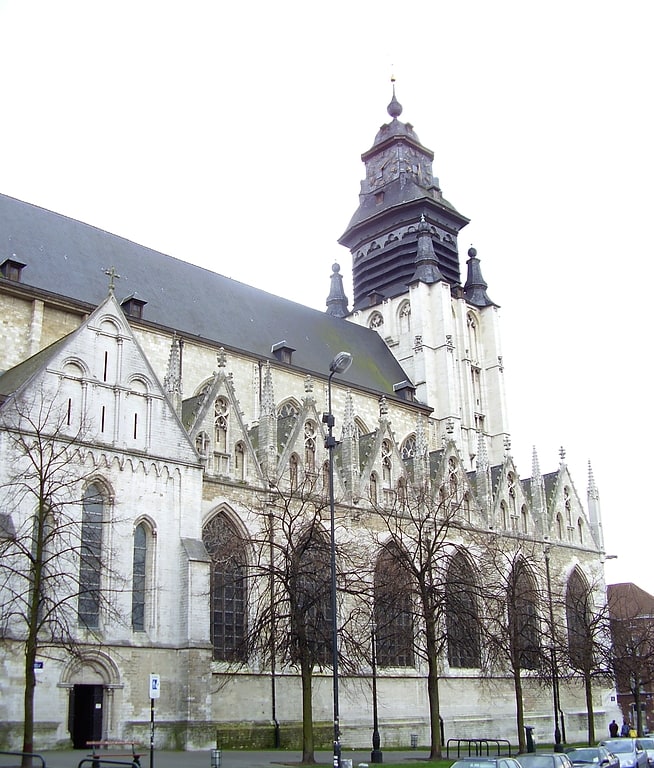
Also known as: Église Notre-Dame de la Chapelle
Church in the City of Brussels, Belgium. The Church of Our Lady of the Chapel, or the Chapel Church, is a Roman Catholic church located on the Place de la Chapelle/Kapelleplein in the Marolles/Marollen district of Brussels, Belgium. This site is served by Brussels-Chapel railway station.[34]
Address: Place de la Chapelle, 1000 Brussels (Bruxelles-Ville)
Jewish Museum of Belgium

Also known as: Musée juif de Belgique
Museum in the City of Brussels, Belgium. The Jewish Museum of Belgium is a museum in Brussels, Belgium, focusing on the history of the Jews in Belgium.[35]
Address: Rue des Minimes 21, 1000 Bruxelles (Bruxelles-Ville)